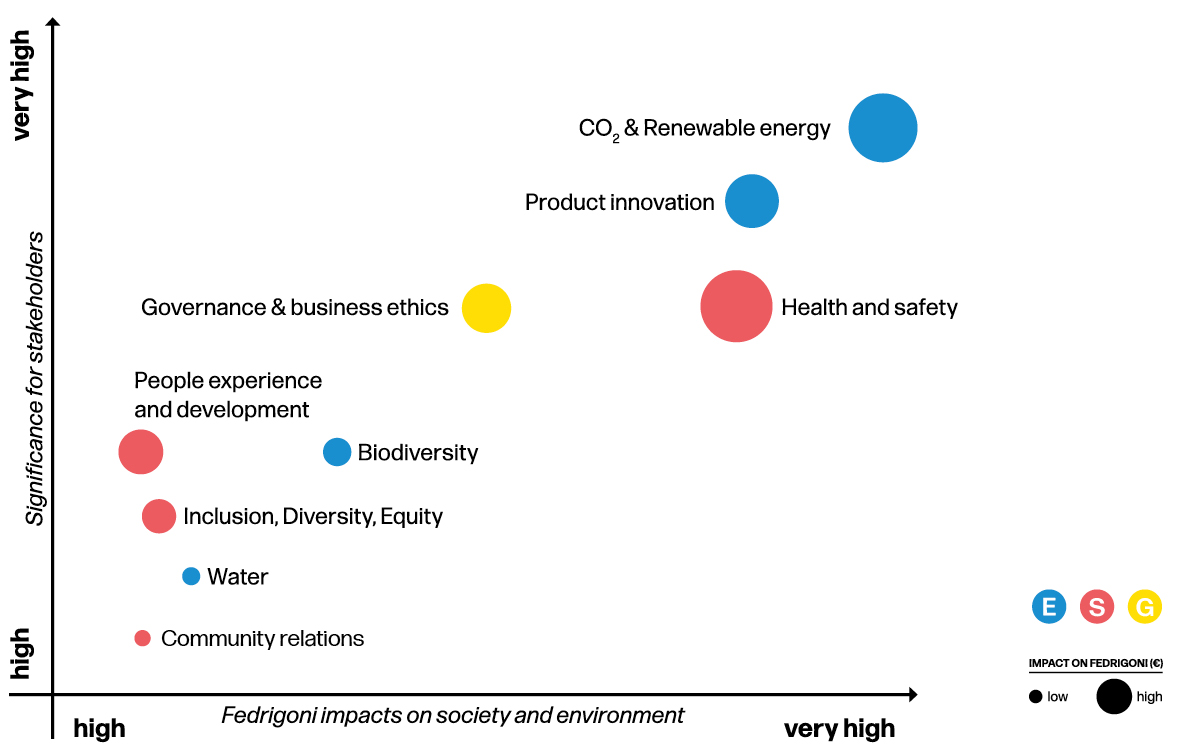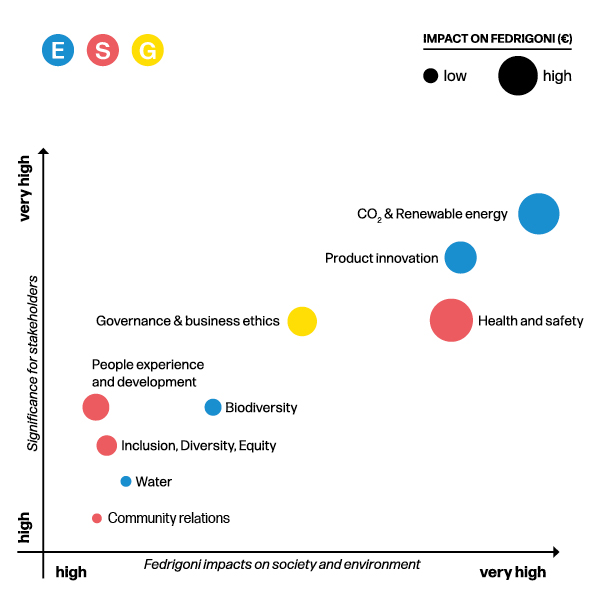Toward 2030
The achievement of our 2030 targets is daily challenged by the ever-changing geopolitical and economic backdrop we face as a global company.
Our challenges are demanding yet our accountability and passion are our strength. We strive to excellence in our service and performance of our products. We build relationships in our ecosystem and contribute to people growth. We embrace transformation. These are the three Behaviours that since 2021 have shaped everything we do, how we relate to our transformation and how we navigate it.
Starting from the Double Materiality Matrix
Since 2022, our materiality analysis has integrated the requirements of the GRI Standards with some of the Double Materiality framework included in the CSRD. The analysis encompasses:
- An “inside-out” assessment of the impacts generated by the Group’s activities and value chains on society and the environment, evaluating each impact based on severity and likelihood.
- An “outside-in” analysis of each topic, considering both actual and potential financial risks and opportunities. For the risk assessment, we relied on our Enterprise Risk Management framework.
- Stakeholder perspectives, ranking each topic based on its relevance to our stakeholders’ business decisions.
In 2024, we updated the analysis, and the results reaffirmed our 2030 ESG Priorities.


The Materiality analysis, in combination with the SDG Action Manager tool by UN Global Compact allowed us to identify Sustainable Development Goals (SDGs) on which we want to make the difference:
For each material topic, we have set ambitious, measurable, and quantitative goals. Here are our 2030 ESG targets:
-47.1%
of absolute scope 1 and 2 GHG emissions (Kt CO2e)
From 395kt (in 2019) to 209 ktons CO₂
90%
of suppliers by spend,
covering purchased good and services and capital goods, with science-based targets (vs. 2022)
100%
industrial waste recovered.
We want to eliminate waste destined for landfills (vs. 2019)
95%
of supplier spending
base assessed also according to ESG criteria (vs. 2020)
-10%
of freshwater withdrawal
(vs. 2022)
100%
of products designed for optimal end-of-life recycling and recovery.
With LCA on demand and based on FSC pulp only, where applicable (vs. 2022)
-85%
work-related injury rate
from 21 to 3 (vs. 2020)
+35%
of managerial positions held by women
From 22% (in 2020) to 35%
100%
People
involved in Performance Conversation (vs.2020)
100%
of people trained on our Code of Ethics
(vs. 2020)
5%
In the top 5% for employee NPS (eNPS)
compared to other manufacturing companies
1
At least 1 initiative per year with local communities
in each country where we operate to create shared value












